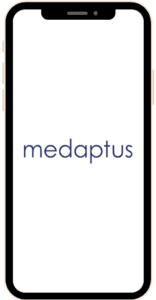Complementing the initial capture of essential charge information by the physician, a complete charge capture solution provides a workstation-based environment for coders to validate charges and ensure both accuracy and completeness prior to billing. This starts with reconciliation – have all charge opportunities been capitalized on?
Charge reconciliation is relatively straightforward for office charges. If a provider sees 20 patients, there should be 20 charge records. This is not so simple in the hospital setting where at minimum, for every day a patient is in the hospital there should be at least one physician charge for the evaluation and management of the patient. But there could be – and usually are – other daily charges.
Tracking Admission-based Charge Entry

Mobile Charge Capture
Electronic charge management in the inpatient setting provides a view of a patient’s admission and where gaps exist, or where there may be problematic activity such as two providers entering time against a single patient for the same day and same condition (not allowable). This type of insight is not easily attainable using paper forms or simplified electronic systems, and reconciliation is typically accomplished in the form of a pure FTE effort with double or triple redundancy checking. Since EHRs were designed primarily as clinical systems, their charge capture modules often lack features supportive of billing-related workflows.
The medical group business office has teams of personnel assigned to tasks in order to optimize reimbursement opportunities. Beyond reviewing visit opportunity data for the presence of a charge, reviewing the information entered on submitted charges is just as important. Each procedure, modifier and diagnosis must be appropriate for the service rendered, and must be compliant with payer rules.
A well-designed charge capture system can be very powerful in the charge review process because it applies the necessary intelligence at the right time in the process. For example, if a commercial carrier has a rule requiring a modifier for a specific procedure, a pre-emptive rule alerting the coding team to that requirement can catch potential denials prior to bill submission. A robust rules engine applied at the right time can enable an “exception-based workflow” for coders where only charges identified with errors are flagged for review – not every single charge.
Doing More with the Same, or Less
Just as there are benefits of electronic workflow for physicians, there are numerous benefits for the business office:
- Enhanced productivity is a measurable outcome of electronic charge capture and management. Coders and administrative personnel no longer spend time seeking out paper forms or clarification on handwriting that may be illegible.
- With an appropriately configured compliance rules engine flagging providers at the point-of-care for simple coding errors while also permitting the automatic billing transmission of ‘clean’ charges, this is a boost for payment timeliness.
- As regulatory or payer policies change, from new codes to new rules, these updates should happen automatically in the software, reducing the need for continuous education and re-training for coding resources.
Another way of thinking about the effectiveness of a powerful charge management platform is this: practices can grow, bringing on more providers, with the same amount of administrative personnel in the back office. This is critical as group practices seek expansion in an effort to better position themselves in a medical landscape that has gotten even more complex post COVID.
Putting an analytical lens over the entire charge capture and related management processes can reveal patterns or outliers prime for intervention in order to achieve better outcomes. Understanding where bottlenecks lie, and possible reasons why, arms revenue cycle leaders with insight to implement new processes or flows for continuous improvement.
In our next post, we will talk more about how to use the information collected during the charge capture process to drive performance improvement.
Get the latest updates and news delivered to your inbox.
Subscribe to our newsletter today.





